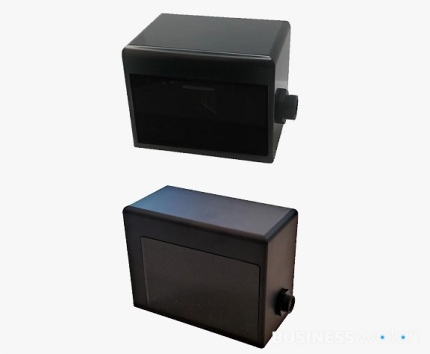Share AutoL's technology and news.
- MEDIA
- NEWS
NEWS
"Hyundai Researcher Riding a Unicycle" (1)
Hyundai's Spinoff, AutoL CEO Lee Yong-sung: "Commercializing High-Resolution Lidar, the 'Eyes' of Autonomous Vehicles, Within 3 Years" "Aiming for More Efficient Lidar Than Velodyne"
This year, three startups became independent through Hyundai Motor Group's in-house startup nurturing program (Zero One Company Builder). One of them is AutoL, which is developing a high-resolution lidar (Light Detection and Ranging) that serves as the 'eyes' of autonomous vehicles.
Lee Yong-sung, the CEO who embarked on a new challenge beyond the stable fence of a large corporation, met via email. A graduate of Hyundai Motor Company's Central Research Institute, he said, "After the spinoff, it always feels like riding a unicycle," and added, "To avoid falling, you have to keep moving forward, and while doing so, you have to think about where to go so that the wheels don't fall into potholes."
Where did the CEO, who rides a unicycle, aim for? He stated, "The first goal is to apply lidar technology to production vehicles by 2024," and for the long term, he emphasized creating a foundation where young talents can freely attempt and challenge new technologies.
- What kind of company is AutoL?
AutoL is a specialized company in the development of lidar sensors for autonomous driving. It was founded by engineers who had previously worked on lidar development at Hyundai Motor Company's Central Research Institute. The company aims to develop and supply lidar sensors suitable for mass production in the automotive industry, considering lidar as one of the core technologies for autonomous driving.
- Lidar is often compared to radar (Radio Detecting and Ranging, RADAR). What is the difference between lidar and radar?
Lidar is indeed less familiar compared to radar. The functions and principles of lidar and radar are similar. Both sensors emit waves or light, measure the time it takes for the waves or light to be reflected by objects, and obtain distance information. The key difference lies in the means of object detection, where lidar uses light (laser) and radar uses radio waves.
Lidar employs short-wavelength light to detect and recognize the shapes of objects with a resolution sufficient for identification. It provides high resolution, clear visualization of object shapes depending on the number of channels, and can detect small objects. Lidar also offers the advantage of accurate detection with a distance accuracy of ±3 cm. In contrast, radar uses long-wavelength radio waves, allowing it to detect objects at greater distances and penetrate organic materials, such as plastics or fabric. However, radar has a disadvantage of lower resolution, making it less precise in recognizing object shapes.
Currently, radar and cameras used in Advanced Driver Assistance Systems (ADAS) in vehicles collect distance and image information separately. However, to ensure the safety of autonomous vehicles beyond Level 3 (conditional automation with driver intervention in case of danger), both lidar and cameras are needed. Lidar can complement the blind spots of radar and cameras by acquiring both distance and image information, which is why it is considered an essential sensor for future autonomous driving in most automotive industries.
- What are the technical limitations of lidar sensors?
Lidar faces challenges in penetrating opaque materials due to its use of light with wavelengths similar to visible light. Therefore, when integrating lidar into vehicles, windows must remain open to allow the passage of light, and a separate device (washer) is required to remove any foreign substances that may adhere to the surface of the windows. Additionally, most lidar sensors currently contain mechanical components, making them relatively bulky, and their optical alignment may be disrupted by severe impacts, leading to performance degradation. To overcome these limitations, recent research has focused on developing lidar types with pure solid-state components, eliminating mechanical parts.
- In comparison with Velodyne, what differentiates AutoL's lidar? (Velodyne is a U.S.-based company recognized as a leading firm in the field of lidar product development for the mobility sector)
AutoL aims to distinguish its lidar from Velodyne and others by prioritizing efficiency. While Velodyne is a well-established player in the lidar field, AutoL focuses on developing lidar technology that is more efficient than Velodyne's. This emphasis on efficiency likely involves improvements in factors such as accuracy, resolution, and overall performance, positioning AutoL as a competitive alternative in the lidar market.

▲ Velodyne's lidar maintains high-resolution detection performance by using multiple light sources and light-receiving sensors. For example, a 32-channel lidar uses 32 light sources and 32 light-receiving sensors. In contrast, AutoL's lidar implements a 32-channel configuration with just one light source and one light-receiving sensor through high-sensitivity technology. As a result, the number of components is reduced, the assembly process is simplified, and cost savings are possible. Also, Velodyne's 360-degree rotating product has a narrow operating temperature range of -20 to 60°C, while AutoL can operate in a range of -30 to 105°C.
- - What is the range of applications for lidar?
▲ Lidar technology has been used in various industries for terrain detection, weather observation, and more even before its integration with automobiles. Developed with scanning mechanisms based on the wavelength and purpose of light, lidar adapted for automotive use is primarily used to detect objects on the road, making it suitable for similar environments. For instance, it can be employed in smart cities to understand traffic conditions at intersections or be utilized for autonomous delivery robots and logistics robots. It is also applicable to the autonomy of drones and industrial machinery. In the future, lidar is expected to be used in urban air mobility and personal air mobility.
View original article : https://post.naver.com/viewer/postView.naver?volumeNo=32086849&memberNo=997329&vType=VERTICAL

